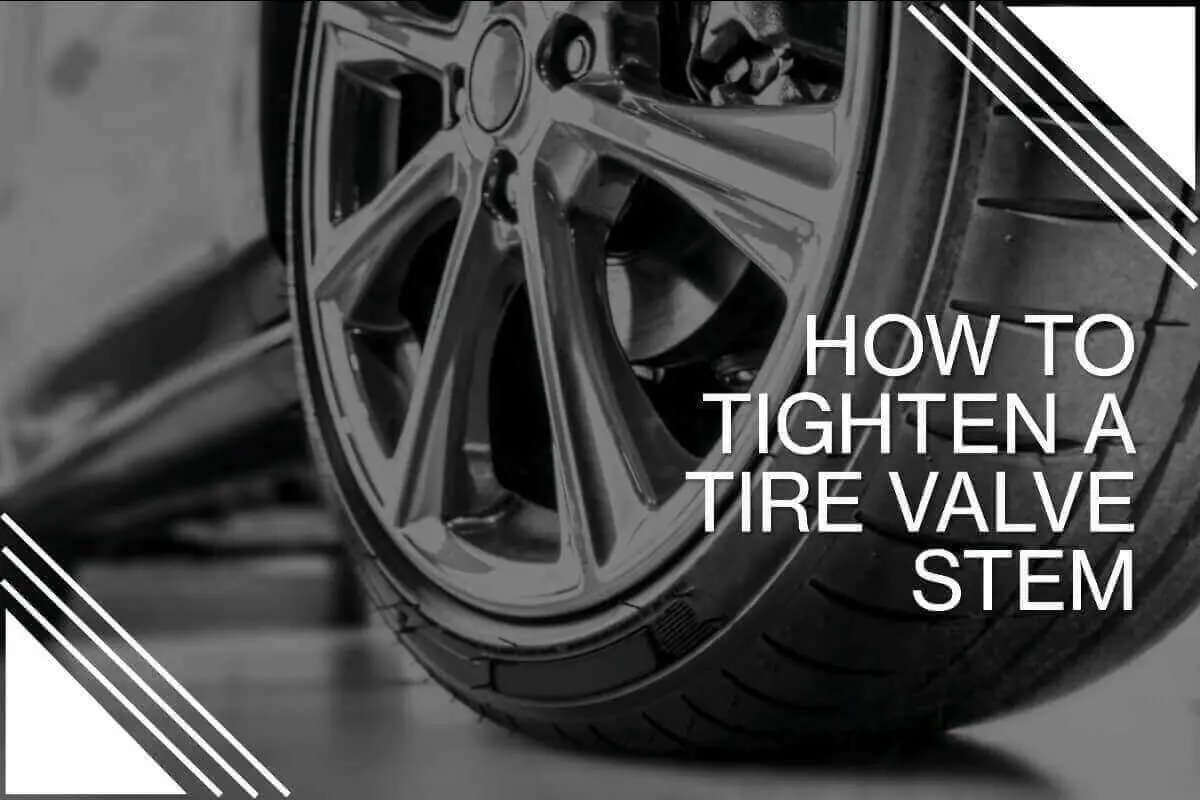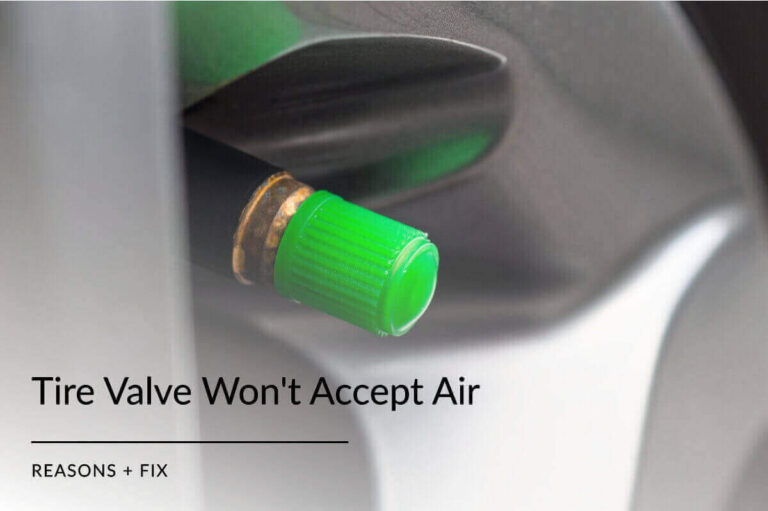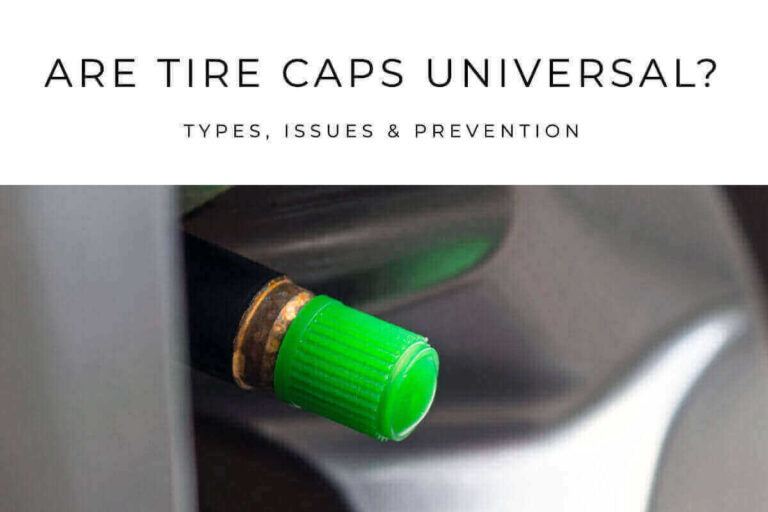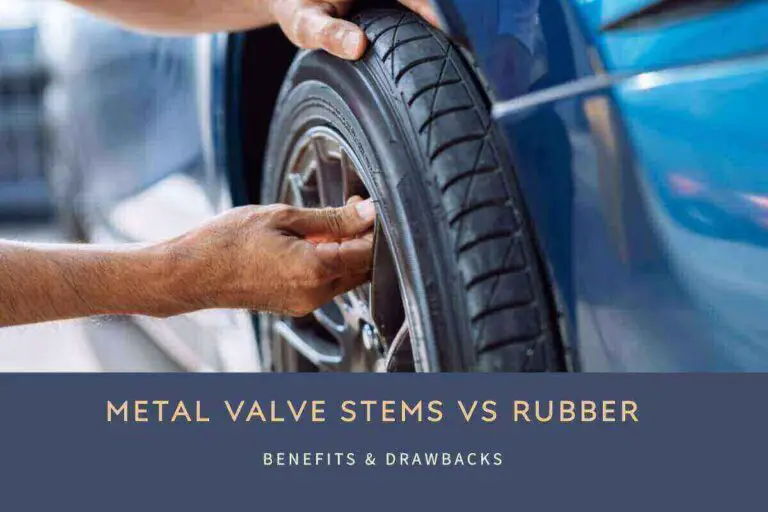Changing a flat tire is essential to car maintenance, but it can be intimidating if you need to know what you’re doing. When changing a tire, one important thing to note that causes to leaky valve stem immediately is ensuring the valve stem is properly tightened.
In this article, we’ll discuss how to tighten a tire valve stem and provide some helpful tips for getting the job done right.
How To Tighten Valve Stem – Step by step
Having a flat tire is never a fun experience, but it doesn’t have to be the end of your drive. Knowing how to tighten tire valve stem is an essential skill for any driver to have in their toolkit.
Whether you’re dealing with a slow leak or just ensuring your tires are properly inflated before taking off, this guide will show you how to do it quickly and safely. All you need is a few basic tools and some patience.
Tire Valve Basics
Tire Valve Basics are essential to know for anyone who owns a vehicle. Tire valves are necessary to keep the correct air pressure in your car’s tires and also help maintain fuel efficiency.
Knowing how to tighten a tire valve stem is an important part of understanding the basics of tire valve maintenance, as it helps prevent air loss and can extend the lifespan of your tires. Basic knowledge of tire valve stems is helpful when you need to replace or repair them.
We will provide step-by-step instructions on how to tighten your tire valve stem so you can get back on the road quickly and safely.
Preparation: Tools Needed
Preparation is one of the most important parts of any project. When it comes to changing or tightening a tire valve stem, it’s no different. To get started on this project, certain tools are necessary in order to ensure it’s done properly and safely. Depending on the job, you may need an air compressor, a special tool called a valve core removal tool, a valve cap wrench, and an adjustable wrench.
For jobs requiring an air compressor, ensure all connections are secure before turning the unit on and inflating the tire pressure to your desired level. If using a valve core removal tool or cap wrench for loosening or tightening the stem nut with pliers, use them correctly, as they can easily damage the threads if work is done too aggressively.
Step 1: Removing the Cap
If you have a flat tire, the first step in fixing it is to remove the cap from the tire valve stem. A tire valve stem can be found near the center of the wheel and is usually made of rubber or metal. It requires a specific type of tool called a valve stem remover to remove it from your vehicle’s wheel.
The valve stem remover should fit snugly over the top of the cap and should be easy to unscrew with your fingers or pliers. You must take caution when removing this cap, as any damage caused by mishandling may render it unusable. Once you’ve successfully removed it, proceed to Step 2.
Step 2: Tightening the Nut
When it comes to changing a tire, the second step is important: tightening the nut. It requires you to use a wrench or socket, depending on the kind of nut used, and a valve stem cap tool that matches the size of your tire’s valve stem. To ensure you get this step right, here are some tips for tightening the nut correctly.
Start by using your socket or wrench to slowly turn and tighten the nut until it fits snugly against the wheel rim. It’s important not to overtighten as this could cause damage to both your tire and rim. Next, use your valve stem cap tool and press fit it onto the top of the nut until it is seated firmly against its surface. Make sure everything is tightened securely before taking your car for a test drive.
Step 3: Replacing the Cap
The third step to tightening your tire valve stem is to replace the tire’s cap. It is an important part of the process, as it serves to keep dirt, dust, and moisture out of the valve stem. The cap also prevents air from escaping and helps keep the pressure in your tires consistent.
Before replacing the cap, make sure you wipe off any dirt or debris that may have accumulated on the stem during Step 2 of this process. Once you’ve cleaned it off, use a light lubricant such as WD-40 or 3-in-1 oil to ensure that it fits properly. Place the cap into position over the stem and press firmly until you hear a “snap” sound indicating it’s securely in place.
How to tighten valve stem without tool
If you’re driving on a long road trip and experience a flat tire, you may wonder how to tighten a tire valve stem without any tools. Fortunately, this is possible if you have the right materials and instructions! Here’s what you need to do:
- Locate the valve stem near the center of your tire. It should be sticking out from the wheel. Next, unscrew the cap that covers it.
- Then, take a piece of cloth or paper towel and wrap it around your thumb as tightly as possible, so there are no gaps between your skin and the material.
- Place your thumb over the end of the valve stem and press down firmly until it stops moving.
- It will help form a tight seal around it to prevent air from leaking.
- If done properly, this simple trick can help get you back on your way without needing any special tools.
Additional Tips
Learning how to tighten a tire valve stem is an important skill for any car owner. Not only does it ensure that your tires remain properly inflated, but it can also keep them from becoming damaged. While tightening a tire valve stem is relatively straightforward, there are a few additional tips you should keep in mind to ensure you get the job done right.
- First and foremost, always make sure your rims are clean before inserting the valve stem.
- It will help ensure that no debris gets inside the wheel and prevent air from leaking.
- It’s essential to use high-quality tools when tightening the valve stem.
- Cheaper alternatives may not provide adequate grip and could potentially damage your rim or cause an improper seal.
- Avoid over-tightening; when tightening the nut on top of the valve stem, use only enough force necessary to secure it.
- Check your car manufacturer’s manual for specific instructions regarding recommended torque settings, as incorrect torque can damage both rubber parts and metal components.
What Is The Proper Tightness For a Valve Stem?
Tightening a tire valve stem is an important step in maintaining your vehicle’s tires. A properly fitted valve stem ensures that air pressure remains consistent in the tire, helping to prevent blowouts and flats. But how do you know when the valve stem is tight enough?
The most important factor for determining the proper tightness of a valve stem is its ability to seal against leakage. To test this, perform an “air test” by filling the tire with air and then covering the end of the valve with your finger or thumb to see if any air escapes around it. If there are gaps between the rubber gasket and rim, you need to tighten it further until there is no leakage.
How Can You Tell If Your Valve System Needs Tightening?
The tire valve stem is an important component of any vehicle’s wheel system, but it can often become loose over time. If the valve stem becomes too loose, it may cause problems with your car’s performance, such as reduced fuel efficiency and even potential tire blowouts. To ensure that you are taking proper care of your car, it is important to know when to tighten the valve stem.
One way to check for a loose valve stem is to listen for air leaking from the tire. If you hear a hissing or whistling sound coming from one of the tires, this indicates that there may be an issue with either the rim or the valve itself.
When Should You Replace a Valve Stem?
When it comes to car maintenance, changing a valve stem can be a daunting task. Knowing when to replace your valve stem is key to keeping your tires inflated and safe on the road. Tire valve stems are exposed to extreme weather conditions and wear down over time. If the rubber seal around the stem is cracked or damaged, air could leak from the tire, leading to further issues down the line.
To ensure your safety on the road, it’s important to regularly inspect your tire’s valve stems for any possible signs of damage or deterioration. The rubber should be intact with no visible cracks, and all components should be properly sealed together without any water seepage through them. If you start noticing air pressure loss in one of your tires or if you detect any dirt buildup around the rim, it may be time for a new valve stem.
Conclusion: How To Tighten Valve Stem
When it comes to the safety of our vehicles, tire valve stems are an often overlooked element. A tight tire valve stem is necessary to ensure that air pressure is maintained in the tires, providing a smooth and safe ride.
After reading this article, you should better understand to tighten a tire valve stem. The process is fairly simple and requires minimal tools and time, so check yours periodically. If you need help with the process or determine if you should replace them entirely, consult a qualified mechanic for assistance.
In conclusion, taking the time and effort now to maintain your vehicle’s tire valve stems properly will save you from costly repairs or replacements down the road due to wear or damage caused by a loose fit.
FAQs
Can You Tighten A Leaking Valve Stem?
Absolutely! It’s a relatively simple process requiring some patience and a few tools. You’ll need a valve stem core tool, a valve stem cap, and either some Teflon tape or pipe sealant. Remove the tire from the rim, then use the core tool to remove the old valve stem core. Replace it with a new one, and wrap it in Teflon tape or pipe sealant.
Can You Tighten Valve Stem Without Tool?
Yes, you can tighten valve stems without a tool. You can use pliers or an adjustable wrench to tighten the nut on the stem until it is secure. Be sure not to over-tighten, as this can damage the stem. If you don’t have any tools available, you can also use your hands to tighten the stem by pushing down on it with your thumb and rotating it simultaneously.
How Tight Should A Valve Stem Be?
The valve stem should be tightened until it is snug. It should not be overtightened as this can damage the valve stem and cause air leakage. A good rule of thumb is to tighten the valve stem until you feel resistance, then give it one additional turn.
Why Is My Valve Stem Leaking Air?
Your valve stem may leak air due to a faulty seal or gasket. Check the seal and gasket for any damage, and if necessary, replace them. Additionally, make sure that the valve stem is properly tightened to ensure an airtight seal. If the issue persists, you may need to replace the entire valve stem.
Why Is My Tire Losing Air When I Try To Fill It?
Your tire likely has a puncture or slow leak. Check the tire for any visible signs of damage, such as nails or other sharp objects. If there are no visible signs of damage, you may need to take it to a mechanic to have it checked out. The mechanic should be able to identify the cause and recommend a solution.
How Do I Stop A Leaking Valve From Dripping?
Depending on the type of valve, the best way to stop a leaking valve from dripping is to replace the seal or gasket. If that doesn’t work, you may need to replace the entire valve. In either case, ensuring you have the right parts and tools for the job is important. If you’re unsure, consult a professional for help.
Can You Overtighten A Valve Stem?
Yes, it is possible to overtighten a valve stem. If the stem is tightened too much, it can cause damage to the wheel rim and the tire itself. It can also cause the tire to lose air quickly or become permanently flat. Therefore, it’s essential to be careful when tightening valve stems and not use excessive force.








